Quizzes for exam 1
5.0(1)
5.0(1)
Card Sorting
1/73
Earn XP
Description and Tags
Study Analytics
Name | Mastery | Learn | Test | Matching | Spaced |
|---|
No study sessions yet.
74 Terms
1
New cards
How often should a denture be refitted?
2-4 years
2
New cards
Bone shrinks/ resorbs in what two directions?
Toward the bone mass and toward the palate
3
New cards
To resurface the tissue side of a denture with new material so it will fit the tissue and remaining bone structure more accurately is a process known as a/an:
Reline
4
New cards
To replace the entire denture base material while maintaining occlusal relations of the artificial teeth is a process known as a/an:
Rebase
5
New cards
What type of material is typically used for hard relines?
Auto-polymerizing Acrylic Resin
6
New cards
What are the two reasons for using a resilient denture base liner?
Retention and Healing
7
New cards
Which of the following soft liner materials is the most truly elastic?
Silicone
8
New cards
The principal use of this resilient denture liner is in a cleft palate prostheses.
Velum Acrylic
9
New cards
This soft liner may be used against fresh acrylic during initial processing of a new denture, or it can
be cured against and existing denture,
be cured against and existing denture,
Ethyl Methacrylate
10
New cards
Which soft liner material offers easy polishing and finishing?
Ethyl Methacrvlate
11
New cards
What are the two types of Acrylic denture repairs?
Tooth and Base
12
New cards
T/F. Soft Liner material may be temporary or permanent.
True
13
New cards
T/F. Denture relines are typically a same day service.
True
14
New cards
T/F. When heat curing a reline, be sure to boil for 30 minutes to guarantee proper bonding to old denture acrylic.
False
15
New cards
T/F. Immediate dentures will allow the patient to delay the need for a reline for longer than 4 years.
False
16
New cards
T/F. As much as 60% of bone can be lost in the first year after tooth loss.
False
50%
50%
17
New cards
The reline can represent a solution to two problems, and one or both problems can exist at the same time, what are these two problems?
* unstable on the residual ridge
* occlusal vertical dimension is showing progressive over closure
* occlusal vertical dimension is showing progressive over closure
18
New cards
work order should be as detailed as possible and should include the following: (6 points)
* (1) The name and address of the dental laboratory to which it is directed.
* (2) The case identification.
* (3) A specification of the materials to be used.
* (4) A description of the work to be done and, if necessary, diagrams thereof
* (5) The date of issuance of the authorization.
* (6) The signature and address of the licensed dentist or other dental practitioner by whom the work authorization is issued.
* (2) The case identification.
* (3) A specification of the materials to be used.
* (4) A description of the work to be done and, if necessary, diagrams thereof
* (5) The date of issuance of the authorization.
* (6) The signature and address of the licensed dentist or other dental practitioner by whom the work authorization is issued.
19
New cards
One of the key elements to a successful relationship between a dentist and a dental lab is what?
Good communication
20
New cards
What must be supplied to the dental lab before any work is done?
Work Authorization
21
New cards
DAMAS required the retention of work authorizations for how man years?
Five years
22
New cards
The FDA requires the retention of work authorizations for a minimum of how many years?
2 years
23
New cards
What are two ways you can strengthen the laboratory and dentist relationship?
* good communication
* mutual respect
* mutual respect
24
New cards
T/F. Work on a restoration may not be started or completed before a work authorization has been issued
True
25
New cards
T/F. All state dental practice laws specify the functions that the dentist may perform and the conditions under which he or she may perform them
True
26
New cards
T/F. The dental technician should provide the dental office with accurate impressions and detailed procedure authorizations.
False .
The dentist should
The dentist should
27
New cards
Briefly explain receiver-oriented communication.
Communication that considers receiver factors and allows for their frame of reference
\
Aka - listener-oriented communication.
\
Aka - listener-oriented communication.
28
New cards
What does NADL stand for:
National Association of Dental Laboratories.
29
New cards
What does NBC stand for:
National Board of Certification of Dental Laboratory
30
New cards
What does AlDL stand for:
**Association of Indiana Dental Laboratories**
31
New cards
What does CODA stand for:
Commission on Dental Accreditation
32
New cards
Which organization do you get certified though to become a CDT?
AIDL
33
New cards
what does DAMAS stands for:
Dental Appliance Manufacturers Audit System
34
New cards
SDS stands for what:
Safety Data Sheets
35
New cards
OSHA stands for what:
Occupational Safety and Health Administration
36
New cards
GHS stands for what:
Globally Harmonized System
37
New cards
How many sections are there ?
16 sections
38
New cards
When completing your chemical hazardous ingredient list, what section of the SDS must be checked to find the hazardous ingredients?
Section 3
39
New cards
In which SDS section are you most likely to find the pictograms and Hazard statements?
Section 2
40
New cards
One of our lab managers is pregnant, where do we look in the SDS to make sure we are using proper PPE and engineering controls to minimize her exposure to the chemicals we use?
Section 8
41
New cards
In which SDS section will you find the first aid measures needed if someone is exposed to the chemical?
Section 4
42
New cards
New products were just delivered, where in the SDS would you find the information on how to properly handle and store the new chemicals?
Section 7
43
New cards
Which of the following are required on the label of a secondary container: Circle all that apply
* Name of Product
* Signal Word
* Hazard Statement
* Appropriate Pictograms
* Signal Word
* Hazard Statement
* Appropriate Pictograms
44
New cards
T/F. The signal word Danger is used for less severe hazards
False.
45
New cards
T/F. All secondary containers must be labeled each use.
False
46
New cards
T/F. There are 16 sections in the SDS.
True.
47
New cards
T/F. 4 is a minor hazard under GHS but 4 under NFPA is a Severe Hazard
True
48
New cards
Exploding Bomb

49
New cards
Flame

50
New cards
Flame Over Circle
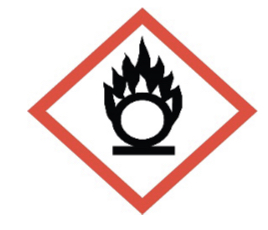
51
New cards
Glass Cylinder
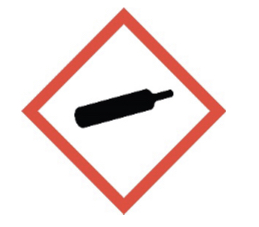
52
New cards
Corrosion
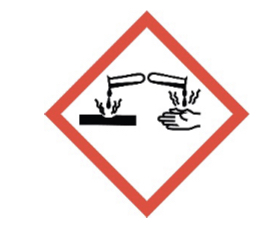
53
New cards
Skull and Crossbones
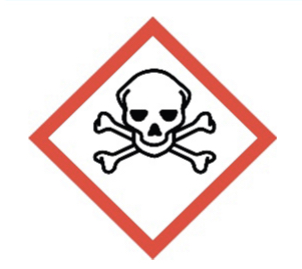
54
New cards
Exclamation Mark
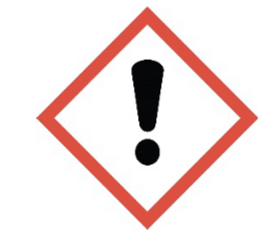
55
New cards
Health Hazard

56
New cards
Environment
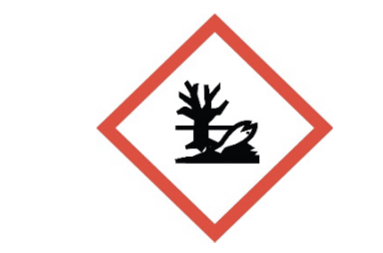
57
New cards
Transport Pictograms
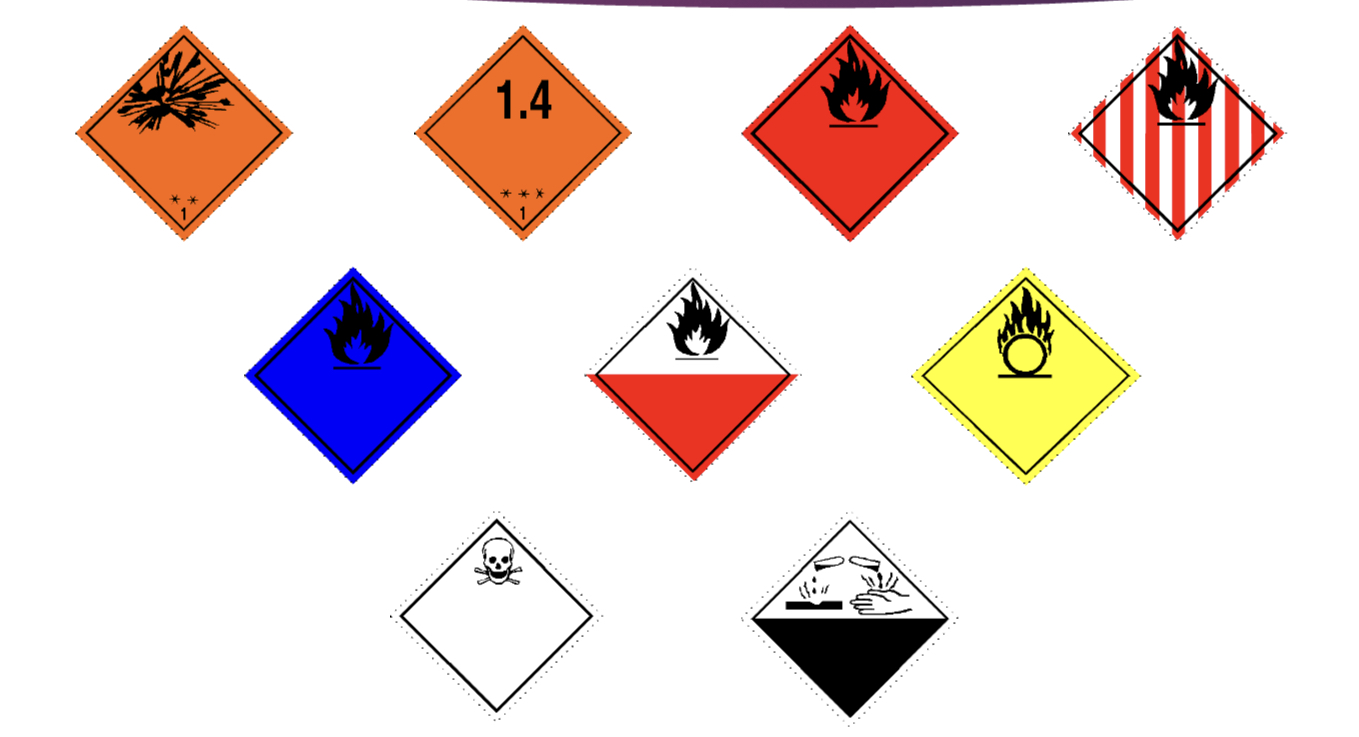
58
New cards
Section 1-16
1. Identification
2. Hazard Identification
3. Composition/ Ingredients Information
4. First Aid Measures
5. Fire-Figthing Measures
6. Accidental Release Measures
7. Handing and Storage
8. Exposure Control/Personal Protection
9. Physical and Chemical Properties
10. Stability and Reactivity
11. Toxicology Information
12. Ecological Information
13. Disposable Considerations
14. Transport Information
15. Regulatory Information
16. Other Information
59
New cards
Section 1
Identification
60
New cards
Section 2
Hazard Identification
61
New cards
Section 3
Composition/ Ingredients Information
62
New cards
Section 4
First Aid Measures
63
New cards
Section 5
Fire-Fighting Measures
64
New cards
Section 6
Accidental Release Measures
65
New cards
Section 7
Handing and Storage
66
New cards
Section 8
Exposure Control/Personal Protection
67
New cards
Section 9
Physical and Chemical Properties
68
New cards
Section 10
Stability and Reactivity
69
New cards
Section 11
Toxicology Information
70
New cards
Section 12
Ecological Information
71
New cards
Section 13
Disposable Considerations
72
New cards
Section 14
Transport Information
73
New cards
Section 15
Regulatory Information
74
New cards
Section 16
Other Information